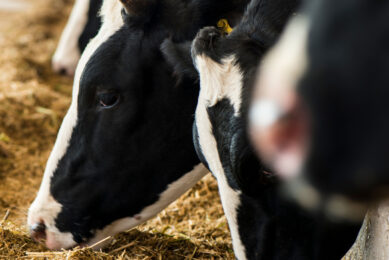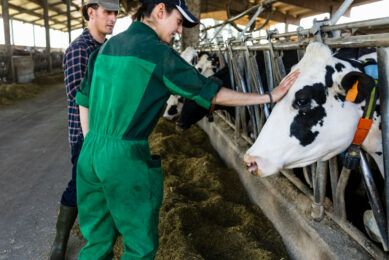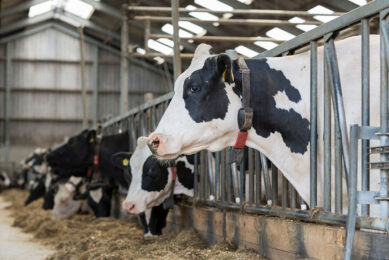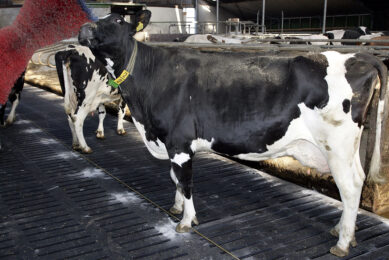Potential biomarker: Predicting ketosis
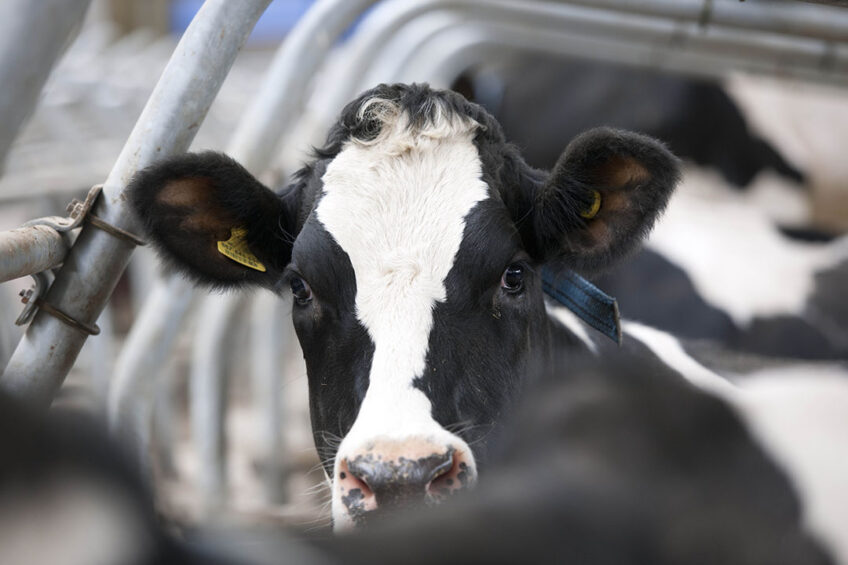
Ketosis is one of the major prevalent metabolic disorders in dairy cows, one that is influenced by both genetic and nutritional factors. Studying altered gene expression is a significant move towards determining potential molecular markers for predicting the incidence of ketosis.
Researchers at Sichuan Agricultural University carried out a study where they employed a whole blood transcriptome approach to investigate the associated alteration of gene expression with clinical ketosis in dairy cows. This research was part of a prospective study designed to elucidate molecular mechanisms and identify predictive biomarkers of clinical ketosis. Their results could significantly help us to understand the underlying molecular mechanisms for incidence and progression of ketosis in dairy cows. Previous studies have found significant genetic corrections between ketosis and other health parameters, suggesting that genetic selection for improved resistance to ketosis is feasible. Nevertheless, the association between difference in gene expression and incidence and progression of ketosis remains unclear.

Ketosis is a common metabolic disorder in dairy cows that can lead to enormous economic losses by decreasing milk production, impairing reproductive performance and increasing the incidence of other diseases – studies show that elevation of ketone bodies such as β-hydroxybutyrate in the systemic circulation contribute to metabolic acidosis. Ketosis can also significantly increase the risk of displaced abomasum, lameness, and metritis. What is usually seen at early lactation is that cows are more prone to suffer from a negative energy balance (NEB) due to milk production and limited feed intake. The NEB in early lactating cows is characterised by a failure of hepatic gluconeogenesis to supply adequate glucose for maintenance and lactation. If the NEB-induced metabolic disorders could not be properly adapted and/or combated, cows would finally develop into subclinical or clinical ketosis. Along with NEB, massive fat mobilisation from different adipose depots is seen, leading to fatty acid β-oxidation in hepatic mitochondria to produce energy, but overload fatty acid occurs in consequence of the elevated concentrations of ketone bodies and fatty liver syndrome.
 How to ensure a calf gets the best start
How to ensure a calf gets the best start
The 2 key factors for a great start to a calf’s life are providing stress-free calving conditions for the mother cow and immediately feeding the calf colostrum from its mother to trigger the immune system of the young animal. What part does the cuddle box have to play in this?
The study
In their study, researchers used 9 Holstein cows diagnosed with clinical ketosis and 10 healthy controls, for which whole blood samples were collected at both prepartum and postpartum. 4 groups of blood samples were defined: cows with ketosis at prepartum (PCK, N = 9) and postpartum (CK, N = 9), respectively, and controls at prepartum (PHC, N = 10) and postpartum (HC, N = 10).
RNA-Seq approach was used for investigating gene expression, by which a total of 27,233 genes were quantified with 4 billion high-quality reads. They revealed 75, and 4 differentially expressed genes (DEGs) between sick and control cows at postpartum and prepartum, respectively, which indicated that sick and control cows had similar gene expression patterns at prepartum. There were 95 DEGs between postpartum and prepartum for sick cows, which showed depressed changes of gene expression during this transition period in comparison with healthy cows (428 DEGs). The DEGs among different groups were analysed using DESeq2 R package (v1.22.2).
Detecting ketosis
Ketosis can be clinically indicated by elevated blood concentrations of ketone bodies, such as β-hydroxybutyrate (BHBA), acetoacetate and acetone. The standard diagnostic test for ketosis is the concentration of blood BHBA, for which the varied cut-point values are used, ranging from 1.0mM to 1.4mM for some studies, while for some studies higher cut-point values of BHBA such as 1.6mM and 1.8mM are used. In the present study, researchers conservatively employed 2.6mM BHBA as cut-point value for defining the cows with clinical ketosis because of two considerations. First, they tried to avoid false-positive clinical ketosis by increasing the cut-point value. Second, from their former field experiences, it had been observed that cows with blood BHBA ≥ 2.6mM had a clear reduction of dietary intake and milk production.
Differential expression of genes
Between postpartum ketotic cows (CK) and postpartum control (HC groups), a total of 75 genes were detected to be differentially expressed, 27 genes had higher relative expression level in the CK group than in the HC group and another 48 genes significantly decreased in the CK group. However, only four genes, syntaxin 1A (STX1A), striated muscle enriched protein kinase (SPEG), ENSBTAG00000053952 and ENSBTAG00000051641 were differentially expressed when compared to ketotic cows at prepartum (PCK) and controls at prepartum (PHC) groups. Among these four DEGs, syntaxin 1A (STX1A) was simultaneously significantly more highly expressed in sick cows at both prepartum and postpartum.
The biomarker gene
These researchers derived (from several studies) that syntaxin 1A (STX1A) as a presynaptic protein in humans is widely expressed in brain, endocrine system, heart and other organs. In addition, STX1A has been associated with myocardial ischaemia-reperfusion by regulating KATP and calcium channels signalling pathways. Moreover, STX1A mediates isoflurane-induced alleviation of hypoxia-reoxygenation injury in rat cardiomyocytes. The expression level of STX1A is also associated with stimulation such as stress, ischaemia and hypoxia/reoxygenation in cardio disease. These findings suggest a potential role of STX1A in environmental stress and ion homeostasis, which plays an important role in the ketosis process. It may be considered as useful as screening, diagnostic and predictive biomarkers of ketotic cows.
Overall, the researchers proposed that the expression level of STX1A could potentially be used as a new ketosis biomarker since it was the only gene that was highly expressed in sick cows at both prepartum and postpartum. These results could significantly contribute to understanding of the underlying molecular mechanisms for incidence and progression of ketosis in dairy cows.
This article is based on the original article by Zhou-Lin Wu, Shi-Yi Chen, Chao Qin, Xianbo Jia, Feilong Deng, Jie Wang and Song-Jia Lai. 2020. Clinical Ketosis-Associated Alteration of Gene Expression in Holstein Cows. Genes, 2020, 11, 219; doi:10.3390/genes11020219.



